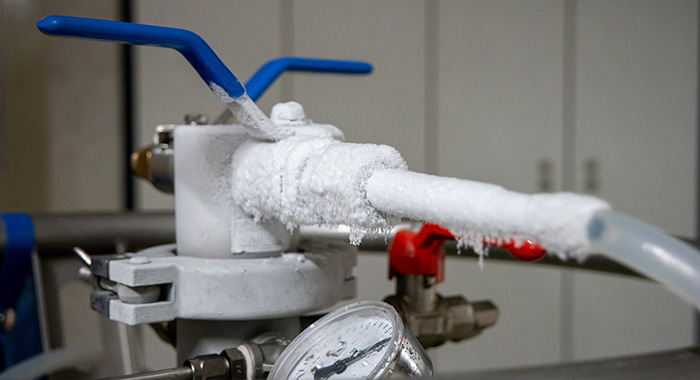
Industrial gas, 28 January
How the Joule-Thomson effect impacts valve function
The Joule-Thomson effect is a critical phenomenon in valve operations, this effect describes the temperature change of a real gas or liquid when it expands through a valve while kept insulated from its environment.
Understanding the Joule-Thomson Effect
When gas pressure is reduced across a control valve or pressure-reducing regulator, its temperature also decreases. For natural gas, the general rule of thumb is that for every 689 kPa (100 psi) pressure drop, the gas temperature decreases by approximately 3.3-4.4°C (6-8°F). For instance, if the natural gas pressure drops from 6200 kPa to 1380 kPa (900 to 200 psi) across a regulator, the temperature could decrease by approximately 23.3-31.1°C (42-56°F).
Impact on valve selection and operation
This temperature drop can lead to significant operational issues:
- Freezing risk (inside): Natural gas often contains moisture, which can freeze when the temperature drops below 0°C (32°F), potentially causing valve blockages.
- Ice build-up (outside): As the gas expands and cools, moisture from the surrounding air condenses and freezes on the outside of the valve or regulator. The extent of ice buildup depends on several factors. The presence of ice on a regulator can have serious implications. A frozen regulator may malfunction by restricting or completely blocking gas flow. This can lead to pressure instability, causing inconsistent gas delivery. In extreme cases, ice buildup can pose safety hazards, such as over-pressurization, gas leaks, or an inadequate supply of gas to critical systems.
- Material considerations: Valves must be constructed from materials that can withstand cryogenic temperatures, especially in applications with high-pressure drops.
- Trim selection: For mixed refrigerant applications, proper trim selection is crucial. Balanced cryogenic valves are often preferred, and drilled-hole or slotted trim in a flow-up direction may be used to mitigate flashing-related noise, vibration, and erosion.
Mitigation strategies
To address the challenges posed by the Joule-Thomson effect:
- Heat tracing: These can be installed around valves to counteract the cooling effect.
- Insulation: While it can make maintenance difficult, insulation is sometimes used to protect valves.
- Pre-heating: Implementing gas pre-heating systems upstream of the pressure-reducing valve counteracts the Joule-Thomson cooling effect.
- Parallel valve system: As one valve/regulator experience freezing or icing the secondary regulator can take over the control without interruption in gas delivery.
By understanding and accounting for the Joule-Thomson effect, engineers can select appropriate valves and implement necessary measures to ensure efficient and safe operation of gas systems.
Our techincal specialists are here to help you choose the right valves and solutions for your specific application. Feel free to contact us or book a meeting directly with one of our product specialists.
 Language
Language Swedish
Swedish English
English